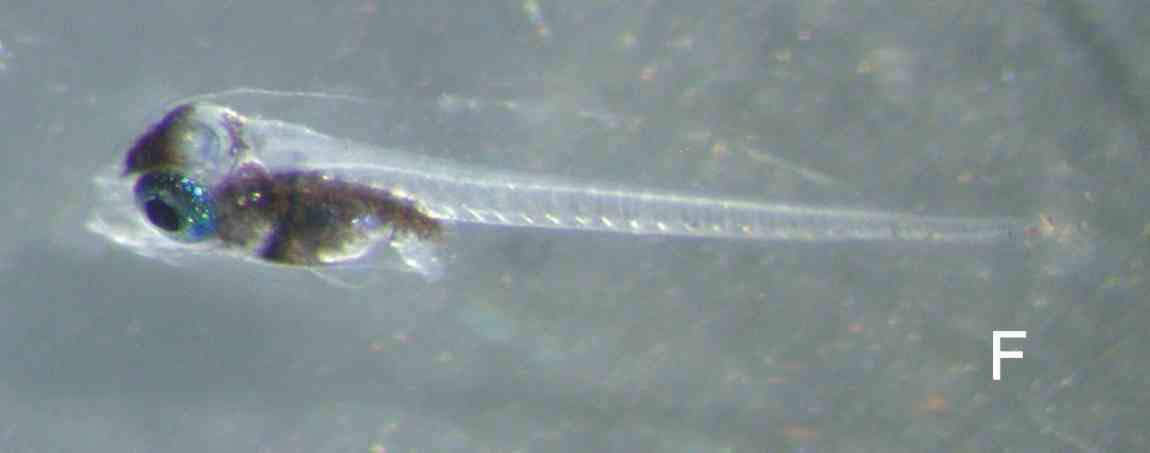Priacanthidae: E III B5
Pristigenys niphonia (Cuvier, 1829).
Japanese bigeye






Egg diameter in µm |
Number of oil globules |
Diameter of oil globule in µm |
Yolk texture |
Perivitelline space |
Position of oil globule at hatch |
Gut length at eye- pigment stage |
Myomeres |
760 |
1 |
175 |
segmented |
Moderate to narrow |
bow |
44% of NL |
24 |
Egg: The egg often appears slightly asymmetrical, and the PVS is sometimes moderately wide. The egg is striking, due to the red/brown oil globule, and the two black pigment patches on the developing embryo. Yolk segmentation is usually confined to the edge. Incubation is 25-30 hours.
Larva: The NH larva shows the three main pigment patches illustrated in Plate C. The larva appears to be a slow developer, and some difficulty has been experienced in keeping it long enough for the eyes and mouth to develop. At 3 days the eyes were not pigmented, Body pigmentation was as shown in Plate D. Note the black pigment spots along the dorsal edge of the notochord, towards the tail-end (D). C: NH, D & E: 3 days, F: 5 days(23°C).
This egg (and subsequent larva) is very similar to KIIIB3. They even appeared together in the same sample, on 4 of the 15 occasions when this egg has been seen off Park Rynie. However they were consistently separated on the segmented yolk, oil globule colour and lack of black pigment on the nose of this species. Eleven larvae of this species have been barcoded. Yolk segmentation may sometimes be difficult to see, because a further 8 specimens listed and submitted as KIIIB3 have sequenced to this species. No locally collected adult sequence is currently available, but a wider search in BOLD has yielded a match with Pristigenes niphonia.
 |
Linked samples |
Offshore |
Inshore |
Eggs |
117 |
10 |
Hits |
17 |
7 |
The limited amount of data suggests no obvious, preferred, spawning period (blue graph). The egg was not seen in the DHM samples. The Park Rynie linked samples had almost complete dominance offshore (92%), not surprising for this deepwater species, but numbers are low. See Section 7.3 and Table 1 of the Introductory Notes, for more information on the linked samples.